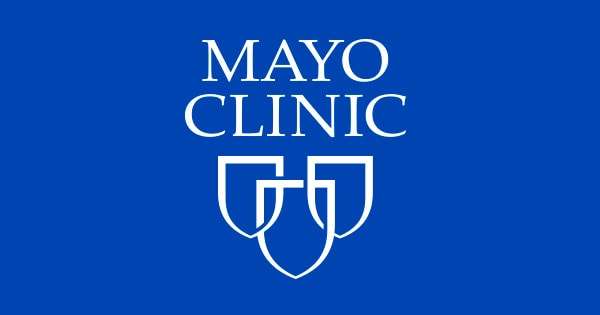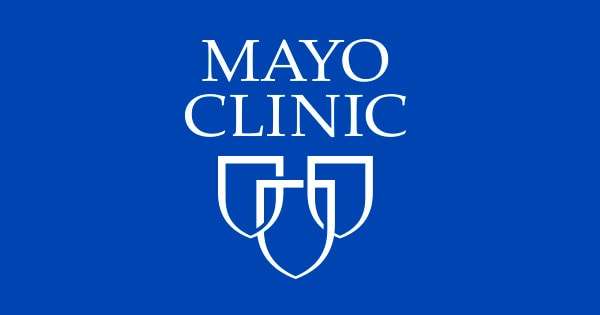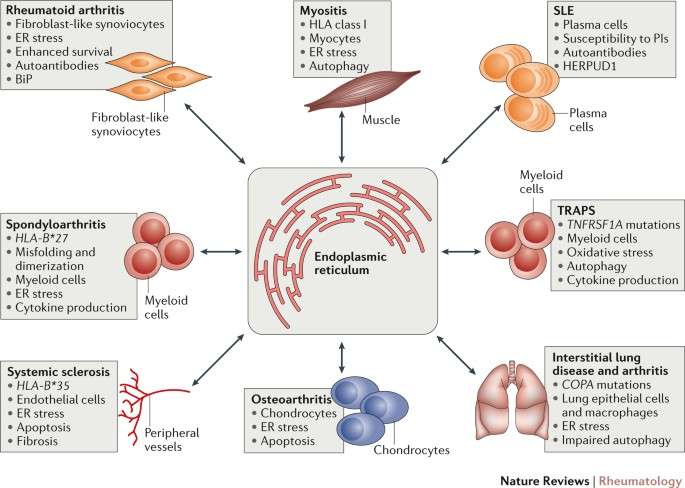Yoga: Fight stress and find serenity
Is yoga right for you? It is if you want to fight stress, get fit and stay healthy.
By Mayo Clinic Staff
Your mobile phone is ringing. Your boss wants to talk to you. And your partner wants to know what’s for dinner. Stress and anxiety are everywhere. If they’re getting the best of you, you might want to hit the mat and give yoga a try.
Yoga is a mind-body practice that combines physical poses, controlled breathing, and meditation or relaxation. Yoga may help reduce stress, lower blood pressure and lower your heart rate. And almost anyone can do it.
Understanding yoga
Multimedia

Yoga pose
Yoga is considered one of many types of complementary and integrative medicine approaches. Yoga brings together physical and mental disciplines that may help you achieve peacefulness of body and mind. This can help you relax and manage stress and anxiety.
Yoga has many styles, forms and intensities. Hatha yoga, in particular, may be a good choice for stress management. Hatha is one of the most common styles of yoga, and beginners may like its slower pace and easier movements. But most people can benefit from any style of yoga — it’s all about your personal preferences.
The core components of hatha yoga and most general yoga classes are:
- Poses. Yoga poses, also called postures, are a series of movements designed to increase strength and flexibility. Poses range from simple to difficult. In a simple post, you might lie on the floor while completely relaxed. A difficult posture may have you stretching your physical limits.
- Breathing. Controlling your breathing is an important part of yoga. Yoga teaches that controlling your breathing can help you control your body and quiet your mind.
- Meditation or relaxation. In yoga, you may incorporate meditation or relaxation. Meditation may help you learn to be more mindful and aware of the present moment without judgment.
The health benefits of yoga
The potential health benefits of yoga include:
- Stress reduction. A number of studies have shown that yoga may help reduce stress and anxiety. Yoga can enhance your mood and overall sense of well-being. Yoga might also help you manage your symptoms of depression and anxiety that are due to difficult situations.
- Improved fitness. Practicing yoga may lead to improved balance, flexibility, range of motion and strength.
- Management of chronic conditions. Yoga can help reduce risk factors for chronic diseases, such as heart disease and high blood pressure. Yoga may also help manage low back pain, neck pain and menopause symptoms. Yoga might also help relieve symptoms of several chronic conditions, such as pain, chronic obstructive pulmonary disease (COPD), asthma, arthritis and insomnia.
Yoga precautions
Yoga is generally considered safe for most healthy people when practiced under the guidance of a trained instructor. But there are some situations in which yoga might pose a risk.
See your doctor before you begin yoga if any of the following apply to you:
- A herniated disk
- A risk of blood clots
- Eye conditions, including glaucoma
- Pregnancy — although yoga is generally safe during pregnancy, certain poses should be avoided
- Severe balance problems
- Severe osteoporosis
- Uncontrolled blood pressure
You may be able to practice yoga in these situations if you take precautions, such as avoiding certain poses or stretches. If you develop symptoms, such as pain, or have concerns, see your doctor to make sure you’re getting benefit and not harm from yoga.
Getting started
Although you can learn yoga from books and videos, beginners usually find it helpful to learn with an instructor. Classes also offer camaraderie and friendship, which are also important to overall well-being.
When you find a class that sounds interesting, talk with the instructor so that you know what to expect. Questions to ask include:
- What are the instructor’s qualifications? Where did he or she train and how long has he or she been teaching?
- Does the instructor have experience working with students with your needs or health concerns? If you have a sore knee or an aching shoulder, can the instructor help you find poses that won’t aggravate your condition?
- How demanding is the class? Is it suitable for beginners? Will it be easy enough to follow along if it’s your first time?
- What can you expect from the class? Is it aimed at your needs, such as stress management or relaxation, or is it geared toward people who want to reap other benefits?
Achieving the right balance
Every person has a different body with different abilities. You may need to modify yoga postures based on your individual abilities. Your instructor may be able to suggest modified poses. Choosing an instructor who is experienced and who understands your needs is important to safely and effectively practice yoga.
Regardless of which type of yoga you practice, you don’t have to do every pose. If a pose is uncomfortable or you can’t hold it as long as the instructor requests, don’t do it. Good instructors will understand and encourage you to explore — but not exceed — your personal limits.
There is a problem with information submitted for this request. Review/update the information highlighted below and resubmit the form.
From Mayo Clinic to your inbox
Sign up for free, and stay up to date on research advancements, health tips and current health topics, like COVID-19, plus expertise on managing health.
ErrorEmail field is required
ErrorInclude a valid email address
To provide you with the most relevant and helpful information, and understand which information is beneficial, we may combine your email and website usage information with other information we have about you. If you are a Mayo Clinic patient, this could include protected health information. If we combine this information with your protected health information, we will treat all of that information as protected health information and will only use or disclose that information as set forth in our notice of privacy practices. You may opt-out of email communications at any time by clicking on the unsubscribe link in the e-mail.
Thank you for subscribing!
You’ll soon start receiving the latest Mayo Clinic health information you requested in your inbox.
Sorry something went wrong with your subscription
Please, try again in a couple of minutes
- Yoga: What you need to know. National Center for Complementary and Integrative Health. https://www.nccih.nih.gov/health/yoga-what-you-need-to-know. Accessed Dec. 10, 2020.
- AskMayoExpert. Yoga. Mayo Clinic; 2019.
- Selectively and using a yoga program. American College of Sports Medicine. https://www.acsm.org/read-research/resource-library. Dec. 10, 2020.
- 6 things to know when selecting a complementary health practitioner. National Center for Complementary and Integrative Health. https://www.nccih.nih.gov/health/tips/things-to-know-when-selecting-a-complementary-health-practitioner. Accessed Dec. 10, 2020.
- Goldman L, et al., eds. Complementary, alternative, and integrative medicine. In: Goldman-Cecil Medicine. 26th ed. Elsevier; 2020. https://www.clinicalkey.com. Accessed Dec. 10, 2020.
- Yoga for health (eBook). National Center for Complementary and Integrative Health. https://www.nccih.nih.gov/health-info/yoga-for-health-ebook. Accessed Dec. 10, 2020.
See more In-depth
For most of us, stress is present on a daily basis. In some cases, it can be mild, in others it can be unbearable, so finding ways to relieve stress and stop it from creeping deeper into your life is imperative. One way to shake off the stress is to practice yoga.
Here are 7 stress-relieving yoga poses for reducing the daily pressure.
1. Standing forward bend
How to do the pose:
Reach tall and exhale forward, then bend knees enough to be able to place your palms on the floor, with head pressed against your legs. Be aware of your spine stretching in different directions as you pull your head down and in. For a deeper stretch, try to straighten the legs. Hold this pose for 6-8 breaths, then whilst inhaling, stretch arms outwards and raise them and your torso back to the standing position.
Benefits of this pose:
- Stretches hamstrings, thighs and hips
- Effective for stress relief, fatigue and mild depression.
2. Cat-Cow Pose


How to do the pose:
Cat – Start on all fours, then while exhaling, round your back toward the ceiling and bring your navel up towards your spine. Bring back to the neutral position, of spine and head aligned.
Cow – Inhale and tilt your pelvis back so that your tailbone sticks up. Keep your abdominal muscles hugging your spine by drawing your navel in.
Benefits of this pose:
- Soothes and stretches the lower back
- Massages spine and relieves stress.
3. Easy Pose

How to do the pose:
Sit up straight, then extend your legs in front of your body, then with knees wide, place each foot beneath the opposite knee and cross your legs in toward your torso. With palms down, place hands onto your knees. Align head, neck, and spine together and sit with your weight balanced. Lengthen spine, but soften your neck and gently relax your feet and thighs. Stay in this position for about a minute, then gently release and change the cross of your legs.
Benefits of this pose:
- Opens hips, lengthens spine and promotes serenity
- Relieves physical and mental exhaustion
- Eliminates anxiety.
4. Head to knee forward bend

How to do the pose:
Sit straight with legs extended, bend left leg and bring the sole of your foot to the upper inside right thigh. Your left knee should rest on the floor. Put both palms on either side of right leg and inhale. Turn towards the extended leg and exhale while folding forward. Hold for 5-6 breaths and repeat the pose on the other side.
Benefits of this pose:
- Relieves mild depression and anxiety
- Calms the brain and helps with headaches and fatigue, even insomnia.
5. Bridge pose

How to do the pose:
Lie flat on back and bend both knees, place feet flat on the floor at hip width apart. Slide arms alongside the body with palms facing down. Inhale and lift the hips up, rolling spine off the floor. Squeeze knees lightly together to keep the knees hip width apart. Press down into the arms and shoulders to open the chest upwards. Engage legs and buttocks to lift the hips higher. Breathe and hold for 4-8 breaths.
Benefits of this pose:
- Reduces anxiety, fatigue, backaches and insomnia
- Provides gentle stretching of the legs and back.
6. Corpse pose

How to do the pose:
Lie flat on back with legs close together but without touching, arms at sides with palms facing up. Let eyes and face soften and close eyes, while breathing deeply. Starting at the top of your head, bring your attention to each part of your body until you reach your toes. Hold this position for 4-5 minutes.
Benefits of this pose:
- Full body relaxation by putting body at ease
- Slows breathing, lowers blood pressure and quietens the nervous system.
7. Childs pose

How to do the pose:
Kneel on a yoga mat with legs together and slowly sit back onto heels. Extend torso up and bend forward from the hips so your chest rests on your thighs and your forehead rests on the ground in front of you. Let shoulders curl around and rest hands next to your feet with your palms up. Hold this position for 5 – 6 breaths.
Benefits of this pose:
- Quietens the nervous system and lymphatic system
- The resting posture eases stress and soothes the mind.
Mind and body connection and the benefits of yoga
Yoga is known to have a calming effect on the body and many of these poses have a stress relieving effect. The balance and strength of the body combined with the focus of calming and clearing the mind reflects in mind and body unity, so it’s not surprising that many people turn to this alternative therapy for healing.
For more information on our holistic programs at Fountainhead Retreat, or to speak to someone about stress, depression or anxiety, please contact us or call 1300 573 095.




